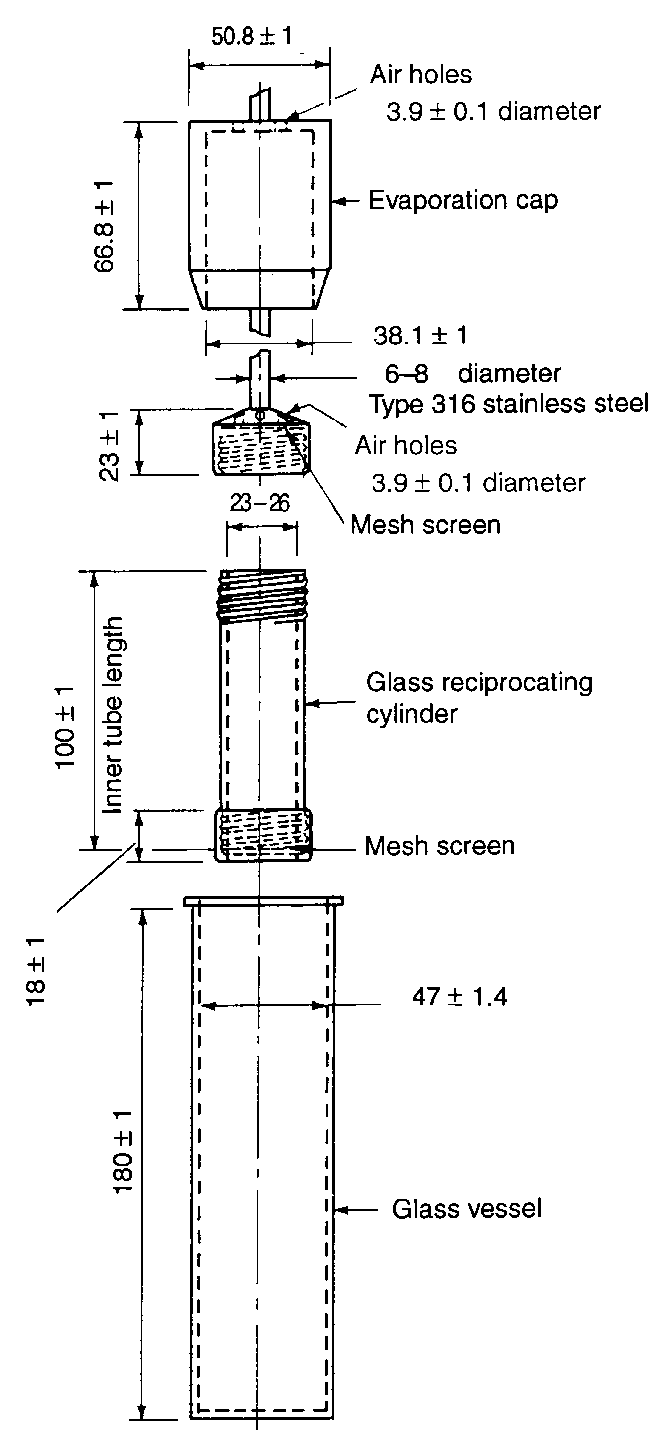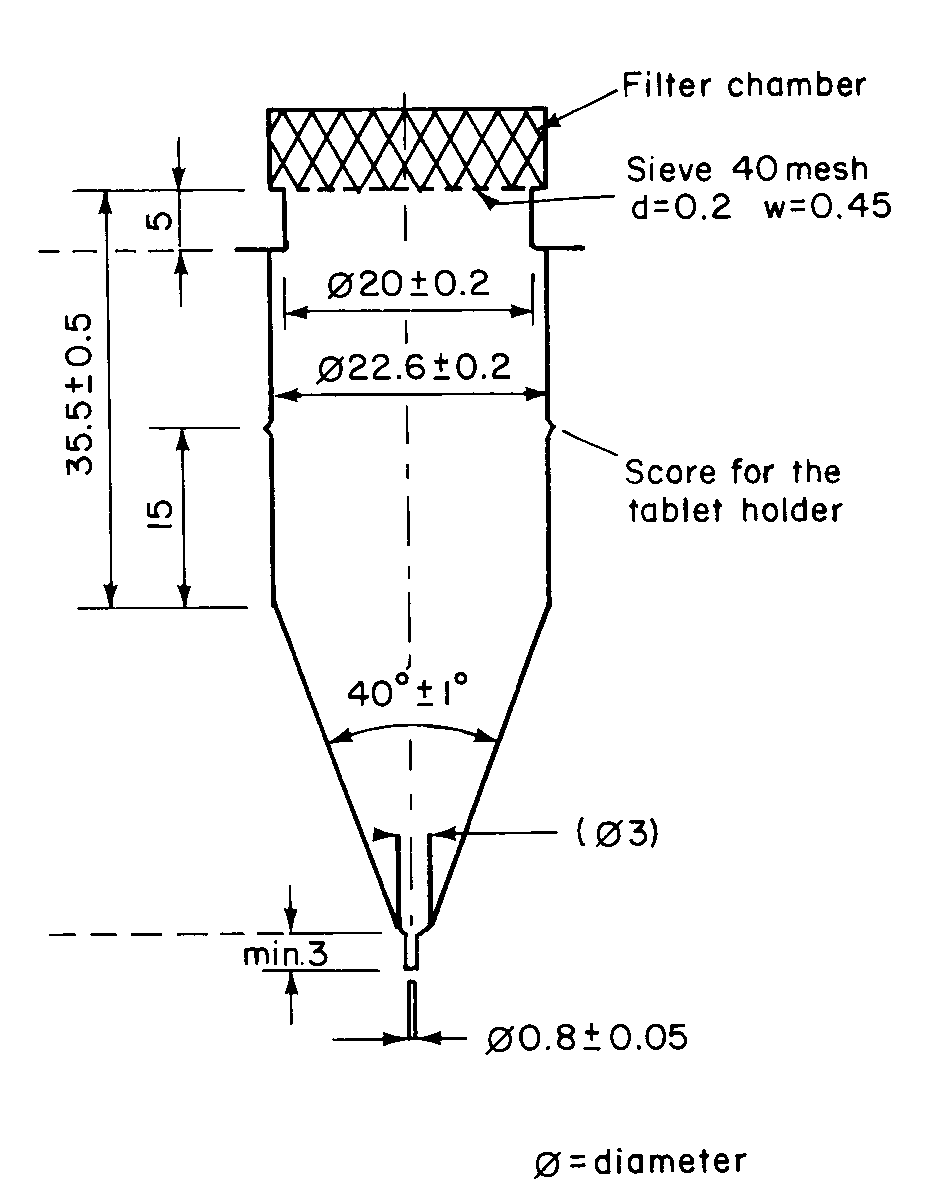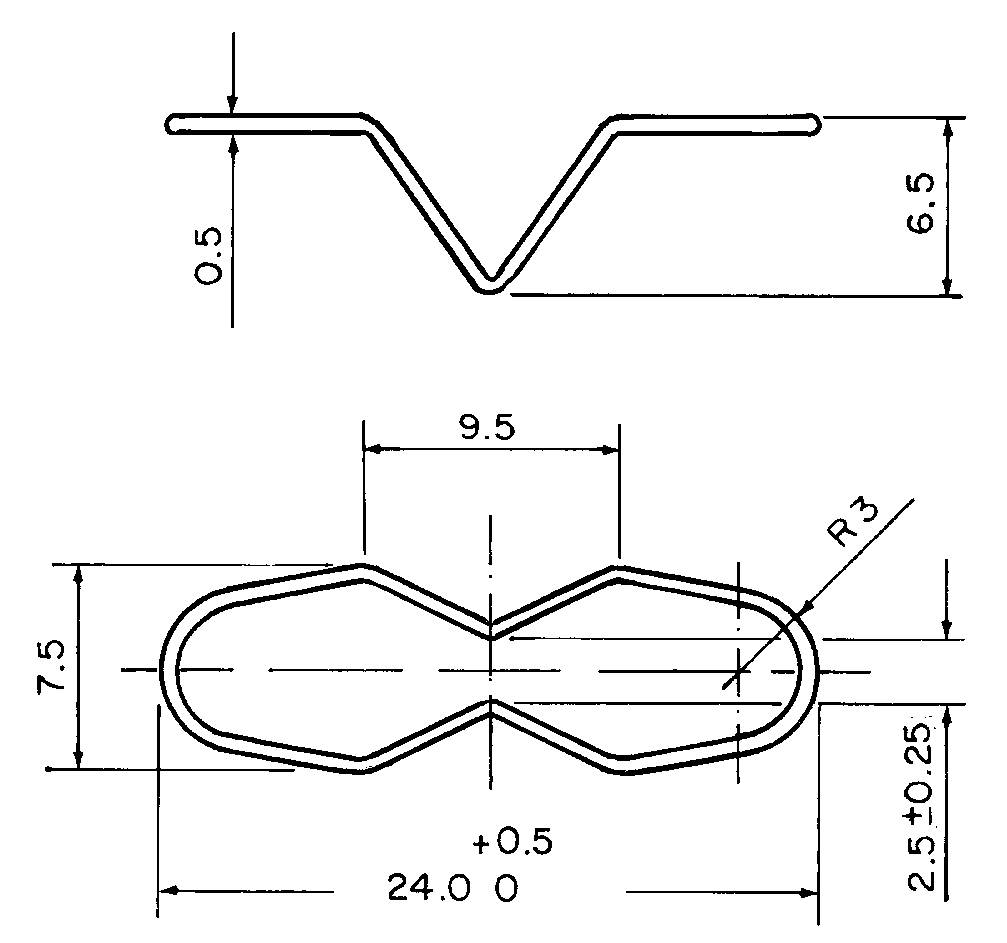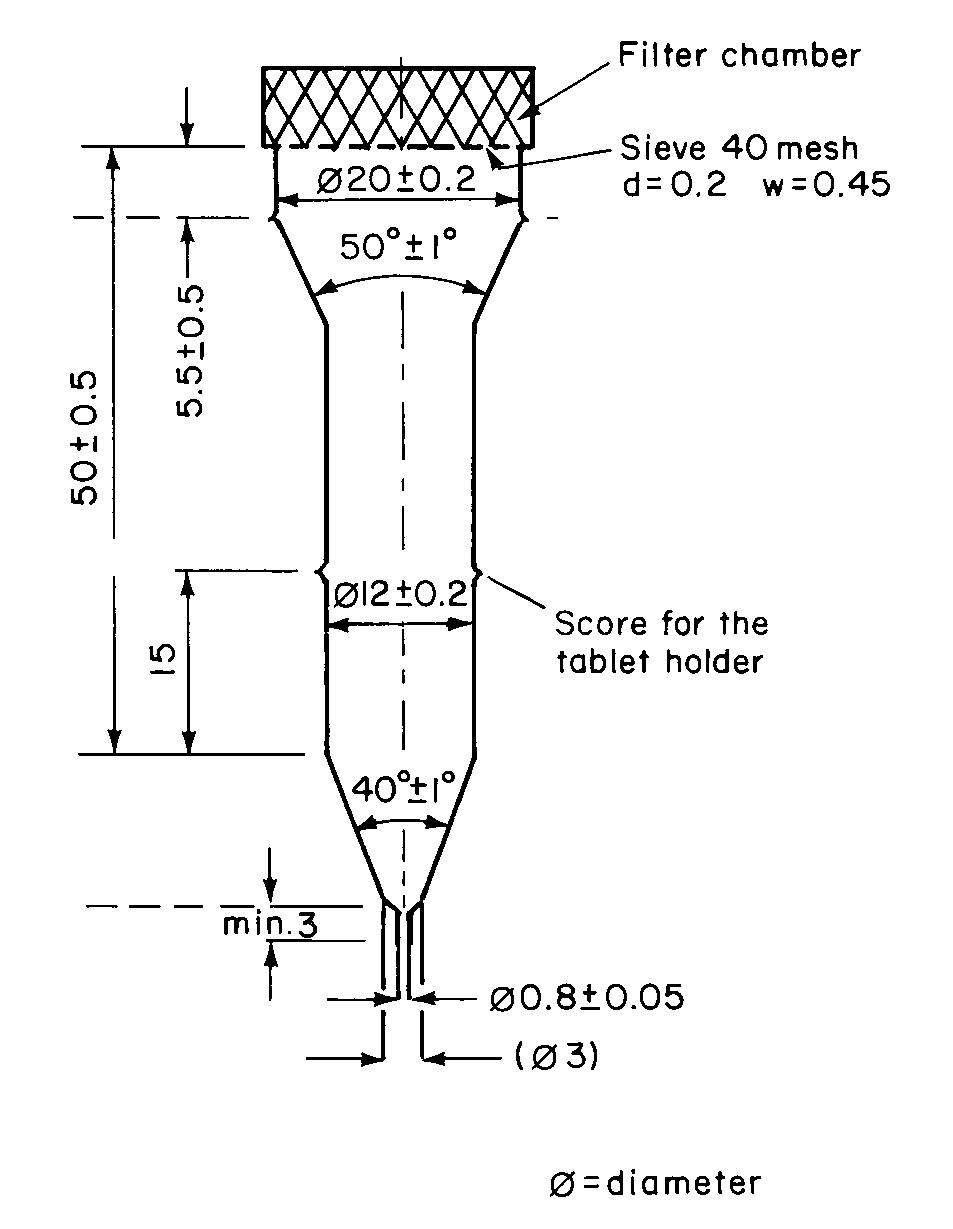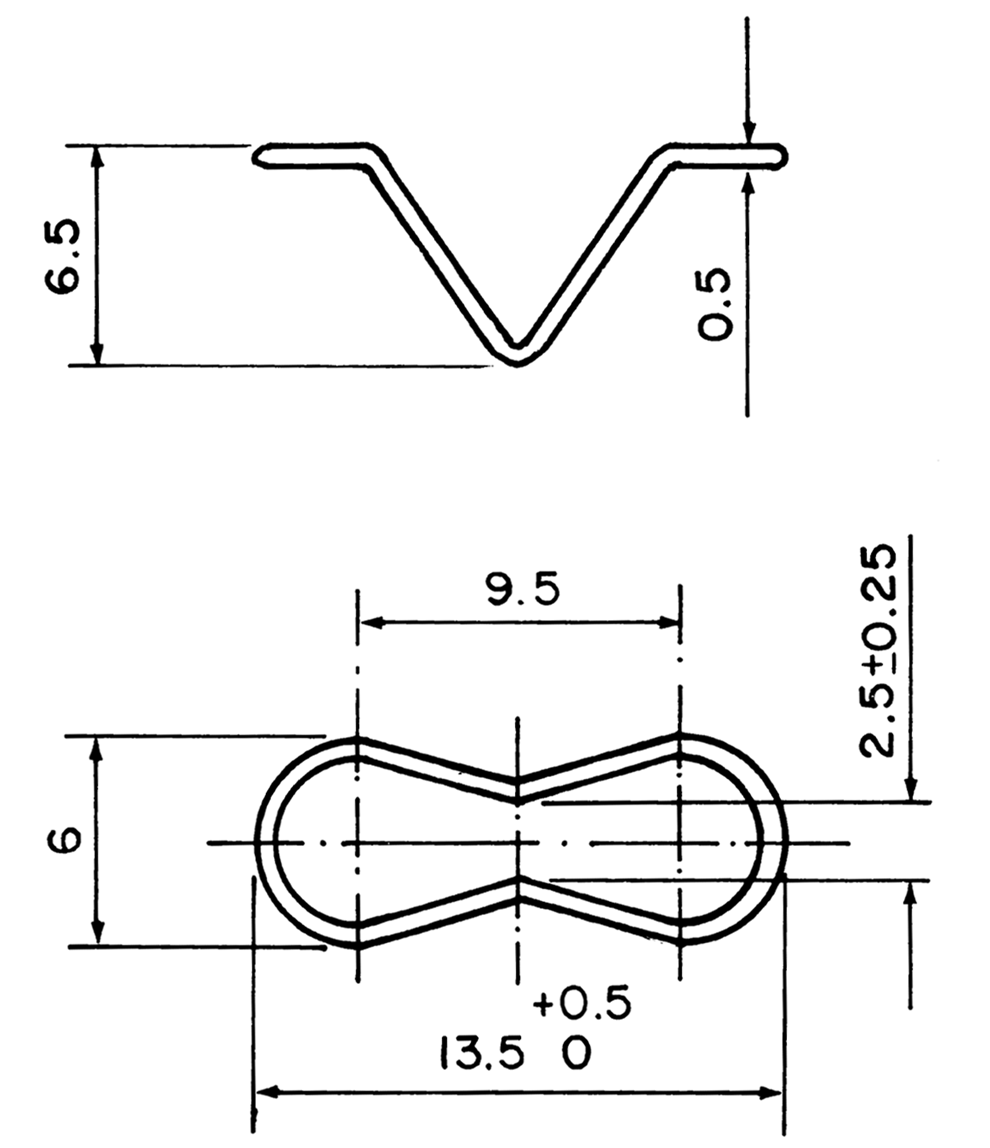EXTENDED-RELEASE ARTICLES—GENERAL DRUG RELEASE STANDARD
Apparatus 1and Apparatus 2
Apparatus—
Proceed as directed under Dissolution á711ñ.
Apparatus Suitability Test,Dissolution Medium,and Procedure—
Proceed as directed under Dissolution á711ñ.
Time—
The test-time points,generally three,are expressed in hours.Specimens are to be withdrawn within a tolerance of ±2%of the stated time.
Interpretation—
Unless otherwise specified in the individual monograph,the requirements are met if the quantities of active ingredient dissolved from the units tested conform to Acceptance Table 1.Continue testing through the three levels unless the results conform at either L1or L2.Limits on the amounts of active ingredient dissolved are expressed in terms of the percentage of labeled content.The limits embrace each value of Qi,the amount dissolved at each specified fractional dosing interval.Where more than one range is specified in the individual monograph,the acceptance criteria apply individually to each range.
Acceptance Table 1
| Level | Number Tested | Criteria |
| L1 | 6 | No individual value lies outside each of the stated ranges and no individual value is less than the stated amount at the final test time. |
| L2 | 6 | The average value of the 12units (L1+L2)lies within each of the stated ranges and is not less than the stated amount at the final test time;none is more than 10%of labeled content outside each of the stated ranges;and none is more than 10%of labeled content below the stated amount at the final test time. |
| L3 | 12 | The average value of the 24units (L1+L2+L3)lies within each of the stated ranges,and is not less than the stated amount at the final test time;not more than 2of the 24units are more than 10%of labeled content outside each of the stated ranges;not more than 2of the 24units are more than 10%of labeled content below the stated amount at the final test time;and none of the units is more than 20%of labeled content outside each of the stated ranges or more than 20%of labeled content below the stated amount at the final test time. |
Apparatus 3(Reciprocating Cylinder)
Apparatus—
The assembly consists of a set of cylindrical,flat-bottomed glass vessels;a set of glass reciprocating cylinders;stainless steel fittings (type 316or equivalent)and screens that are made of suitable nonsorbing and nonreactive material and that are designed to fit the tops and bottoms of the reciprocating cylinders;and a motor and drive assembly to reciprocate the cylinders vertically inside the vessels and,if desired,index the reciprocating cylinders horizontally to a different row of vessels.The vessels are partially immersed in a suitable water bath of any convenient size that permits holding the temperature at 37±0.5 during the test.No part of the assembly,including the environment in which the assembly is placed,contributes significant motion,agitation,or vibration beyond that due to the smooth,vertically reciprocating cylinder.Adevice is used that allows the reciprocation rate to be selected and maintained at the dip rate specified in the individual monograph,within ±5%.An apparatus that permits observation of the specimens and reciprocating cylinders is preferable.The components conform to the dimensions shown in Figure 1unless otherwise specified in the individual monograph.
during the test.No part of the assembly,including the environment in which the assembly is placed,contributes significant motion,agitation,or vibration beyond that due to the smooth,vertically reciprocating cylinder.Adevice is used that allows the reciprocation rate to be selected and maintained at the dip rate specified in the individual monograph,within ±5%.An apparatus that permits observation of the specimens and reciprocating cylinders is preferable.The components conform to the dimensions shown in Figure 1unless otherwise specified in the individual monograph.
USP Reference Standards á11ñ—
USP Chlorpheniramine Extended-Release Tablets RS(Drug Release Calibrator,Single Unit).
Apparatus Suitability Test—
Individually test 1tablet of the USP Drug Release Calibrator Tablets (Single Unit)according to the operation conditions specified.The apparatus is suitable if the results obtained are within the acceptable range stated in the certificate for that calibrator in the apparatus tested.
Dissolution Medium—
Proceed as directed under Dissolution á711ñ.
Procedure—
Place the stated volume of theDissolution Medium in each vessel of the apparatus,assemble the apparatus,equilibrate the Dissolution Medium to 37±0.5 ,and remove the thermometer.Place 1dosage-form unit in each of the six reciprocating cylinders,taking care to exclude air bubbles from the surface of each dosage-form unit,and immediately operate the apparatus as specified in the individual monograph.During the upward and downward stroke,the reciprocating cylinder moves through a total distance of 9.9to 10.1cm.Within the time interval specified,or at each of the times stated,raise the reciprocating cylinders and withdraw a portion of the solution under test from a zone midway between the surface of theDissolution Medium and the bottom of each vessel.Perform the analysis as directed in the individual monograph.If necessary,repeat the test with additional dosage-form units.
,and remove the thermometer.Place 1dosage-form unit in each of the six reciprocating cylinders,taking care to exclude air bubbles from the surface of each dosage-form unit,and immediately operate the apparatus as specified in the individual monograph.During the upward and downward stroke,the reciprocating cylinder moves through a total distance of 9.9to 10.1cm.Within the time interval specified,or at each of the times stated,raise the reciprocating cylinders and withdraw a portion of the solution under test from a zone midway between the surface of theDissolution Medium and the bottom of each vessel.Perform the analysis as directed in the individual monograph.If necessary,repeat the test with additional dosage-form units.
Where capsule shells interfere with the analysis,remove the contents of not fewer than 6capsules as completely as possible,and dissolve the empty capsule shells in the specified volume ofDissolution Medium.Perform the analysis as directed in the individual monograph.Make any necessary correction.Correction factors greater than 25%of the labeled content are unacceptable.
Time and Interpretation—
Proceed as directed underApparatus 1and Apparatus 2.
Apparatus 4(Flow-Through Cell)
Apparatus—
The assembly consists of a reservoir and a pump for the Dissolution Medium;a flow-through cell;a water bath that maintains theDissolution Medium at 37±0.5 (see Figures 2and 3).The cell size is specified in the individual monograph.
(see Figures 2and 3).The cell size is specified in the individual monograph.
Fig.2.Large cell for tablets and capsules.(All measurements are expressed in mm unless noted otherwise.)
Fig.2a.Tablet holder for the large cell.(All measurements are expressed in mm unless noted otherwise.)
The pump forces theDissolution Medium upwards through the flow-through cell.The pump has a delivery range between 240and 960mLper hour,with standard flow rates of 4,8,and 16mLper minute.It must be volumetric to deliver constant flow independent of flow resistance in the filter device;the flow profile is sinusoidal with a pulsation of 120±10pulses per minute.
The flow-through cell (see Figures 2and 3),of transparent and inert material,is mounted vertically with a filter system (specified in the individual monograph)that prevents escape of undissolved particles from the top of the cell;standard cell diameters are 12and 22.6mm;the bottom cone is usually filled with small glass beads of about 1-mm diameter with one bead of about 5mm positioned at the apex to protect the fluid entry tube;a tablet holder (see Figures 2aand 3a)is available for positioning of special dosage forms,for example,inlay tablets.The cell is immersed in a water bath,and the temperature is maintained at 37±0.5 .
.
Fig.3.Small cell for tablets and capsules.(All measurements are expressed in mm unless noted otherwise.)
Fig.3a.Tablet holder for the small cell.(All measurements are expressed in mm unless noted otherwise.)
The apparatus uses a clamp mechanism and two O-rings for the fixation of the cell assembly.The pump is separated from the dissolution unit in order to shield the latter against any vibrations originating from the pump.The position of the pump should not be on a level higher than the reservoir flasks.Tube connections are as short as possible.Use polytef tubing with a 1.6-mm inner diameter and chemically inert flanged-end connections.
Apparatus Suitability Test and Dissolution Medium—
Proceed as directed under Dissolution á711ñ.
Procedure—
Place the glass beads into the cell specified in the monograph.Place 1dosage-form unit on top of the beads or,if specified in the monograph,on a wire carrier.Assemble the filter head and fix the parts together by means of a suitable clamping device.Introduce by the pump theDissolution Medium warmed to 37±0.5 through the bottom of the cell to obtain the flow rate specified in the individual monograph and measured with an accuracy of 5%.Collect the eluate by fractions at each of the times stated.Perform the analysis as directed in the individual monograph.Repeat the test with additional dosage-form units.
through the bottom of the cell to obtain the flow rate specified in the individual monograph and measured with an accuracy of 5%.Collect the eluate by fractions at each of the times stated.Perform the analysis as directed in the individual monograph.Repeat the test with additional dosage-form units.
Where capsule shells interfere with the analysis,remove the contents of not less than 6capsules as completely as possible,and dissolve the empty capsule shells in the specified volume ofDissolution Medium.Perform the analysis as directed in the individual monograph.Make any necessary correction.Correction factors greater than 25%of the labeled content are unacceptable.
Time and Interpretation—
Proceed as directed underApparatus 1and Apparatus 2.
